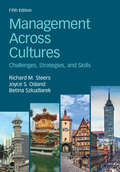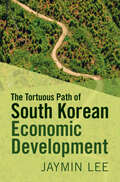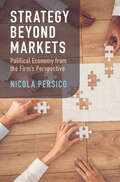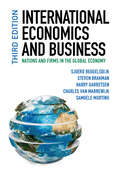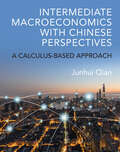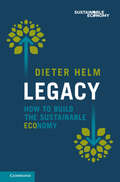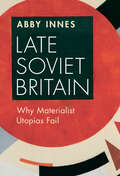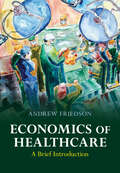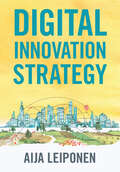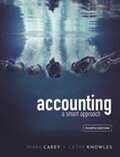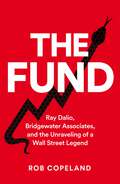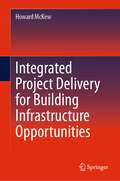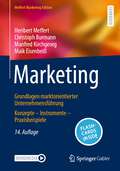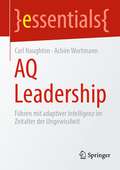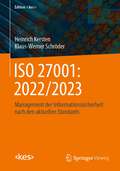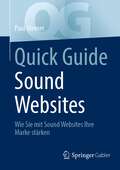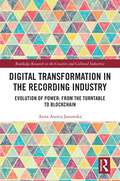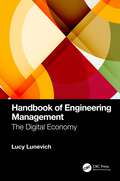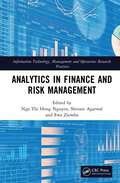- Table View
- List View
Management Across Cultures: Developing Global Management Skills
by Richard M. Steers Joyce S. Osland Betina SzkudlarekInternational Economics and Business: Nations And Firms In The Global Economy
by Sjoerd Beugelsdijk Steven Brakman Harry Garretsen Charles Van Marrewijk Samuele MurtinuDeath In Custody: How America Ignores The Truth And What We Can Do About It (Health Equity In America Ser.)
by Jay D. Aronson Roger A. MitchellThe Fund: Ray Dalio, Bridgewater Associates and The Unraveling of a Wall Street Legend
by Rob Copeland'The most explosive, mind-blowing business book I've ever read' – Bradley Hope, New York Times bestselling author of Billion Dollar Whale'Jaw-dropping . . . well-told, well-structured and exquisitely reported' – Financial Times book reviewDiscover the unauthorized, unvarnished story of famed Wall Street hedge-fund manager Ray Dalio.When Ray Dalio, billionaire founder of Bridgewater Associates, the world's largest hedge fund, announced in October 2022 that he was stepping down from the company he founded forty-seven years ago, the news made headlines around the world. Dalio achieved worldwide fame thanks to a mystique of success cultivated in frequent media appearances, celebrity hobnobbing, and his bestselling book, Principles. In The Fund, Rob Copeland draws on hundreds of interviews with those inside and around the firm to reveal what really goes on with Dalio and his cohorts behind closed doors.Tracing more than fifty years of Dalio's leadership, The Fund peels back the curtain to reveal a rarefied world of wealth and power, where former FBI director Jim Comey kisses Dalio's ring, recent Pennsylvania Senate candidate David McCormick sells out, and countless Bridgewater acolytes describe what it's like to work at this fascinating firm.Dalio has stepped down from Bridgewater before; will the legacy of his Principles continue to chart the course of the firm? The Fund provides unique insight into the story of Dalio and Bridgewater, past, present and future.'A taut, nonfiction thriller' – Bryan Burrough, bestselling author of Barbarians at the Gate'Manages to both shock and entertain at the same time' – Philipp Meyer, bestselling author of American Rust and The Son
Bank- und Finanzwirtschaft im Stress: Aktuelle Herausforderungen und Lösungsansätze
by Stephan Schöning Nils Moch Sonja Schütte-BiastochDieses Buch fokussiert die mannigfaltigen Herausforderungen, mit denen die Bank- und Finanzwirtschaft aktuell konfrontiert ist. Digitalisierung, Sustainable Development Goals/Nachhaltigkeit (Green Finance), Globalisierung, Pandemie-Folgen, demografischer Wandel, Ukraine-Krieg und Konsequenzen für die Weltwirtschaft betreffen nicht nur Banken und Sparkassen, den Finanzbereich und das Rechnungswesen von Unternehmen sowie die Wirtschaftsprüfung, sondern sind auch in vielfältiger Natur miteinander verknüpft. Entsprechend sind Akteure im Finanzbereich gefordert, sich auf diese Herausforderungen einzustellen und zukunftsbezogene Lösungsansätze zu entwickeln. Namhafte Expertinnen und Experten aus Wissenschaft und Praxis geben Antworten auf die drängenden Fragen in der Finanzwirtschaft.
Integrated Project Delivery for Building Infrastructure Opportunities
by Howard McKewThis book examines in great detail the D-B and IPD methods, while touching on D-B-B and CM project deliveries. In this vein, the discussion regarding IPD is a variation from ASHRAE Technical Committee TC 7.1, Integrated Building Design (IBD), with the focus herein on HVAC-Led IPD Opportunities by consulting engineers and mechanical contractors. This IPD variation is also described later in the book as a 21st-century version of what was 20th-century D-B project delivery although D-B project delivery is still widely used.
Marketing: Grundlagen marktorientierter Unternehmensführung Konzepte – Instrumente – Praxisbeispiele
by Heribert Meffert Christoph Burmann Manfred Kirchgeorg Maik EisenbeißDieses bewährte Standardwerk liefert Studierenden im Bachelor- und Masterprogramm sowie Praktikern umfassende Grundlagen des Marketingmanagements und widmet sich eingehend allen neuen Entwicklungen der marktorientierten Unternehmensführung. In der 14. Auflage wurden alle Kapitel überarbeitet. Insbesondere hat die Bedeutung der Nachhaltigkeit die Autoren dazu veranlasst, die Definition des Marketingbegriffs zu erweitern und dabei der Nachhaltigkeit eine besonders wichtige Rolle einzuräumen. Als Konsequenz dieser neuen Definition des Marketing werden an verschiedenen Stellen des Buches die Auswirkungen der Nachhaltigkeit auf die marktorientierte Unternehmensführung erläutert (bspw. in Kap. 4 zur Marketingstrategie). Zudem wurden neue Entwicklungen im digitalen Marketing umfassend berücksichtigt. Zusätzliche Fragen per App: Laden Sie die Springer-Nature-Flashcards-App kostenlos herunter und nutzen Sie exklusives Zusatzmaterial, um Ihr Wissen zu prüfen.Mit diesem umfassenden Blick auf das Marketing wird die neue Auflage ihrem Ruf als "Bibel des Marketings" (w & v - werben und verkaufen) weiterhin gerecht.Der Inhalt Konzeptionelle Grundlagen des Marketing Käuferverhaltens- und Marketingforschung Informationsgrundlagen des Marketing Marketingziele Marketingstrategien Marketing-Mix Marketingorganisation und -implementierung Marketingcontrolling
AQ Leadership: Führen mit adaptiver Intelligenz im Zeitalter der Ungewissheit (essentials)
by Carl Naughton Achim WortmannAQ fördert das Führen. Dies und was diese Förderung ausmacht, zeigen verschiedene Studien. AQ ist die Bezeichnung für ein Bündel von Fähigkeiten und Fertigkeiten von Mitarbeitenden, deren Leistungen auch in unsicheren und komplexen Situationen konstant und stark sind. Auch wenn AQ nicht in einem wörtlichen Gegensatz zum IQ steht, so kann AQ doch als eine sehr treffende Interpretation der für das 21. Jahrhundert relevanten mentalen Fähigkeiten angesehen werden. AQ hat fünf Dimensionen, deren Wirkweise in den Kapiteln mit direkten Tools und Tipps verknüpft werden, um AQ Leadership von der Forschung in die Praxis zu transferieren.
ISO 27001: Management der Informationssicherheit nach den aktuellen Standards (Edition <kes>)
by Heinrich Kersten Klaus-Werner SchröderEin qualifiziertes Management der Informationssicherheit ist heutzutage für jede Organisation unverzichtbar. Die Normenreihe ISO 27000 ist dabei ein anerkannter „Wegweiser“ zu diesem Ziel. Im internationalen Kontext ist ihre Erfüllung für viele Organisationen ein wichtiger Wettbewerbsfaktor. Auch in Deutschland hat diese Normenreihe Eingang in Vorgaben, Regelungen und Gesetze zum Thema Informationssicherheit gefunden.Das vorliegende Buch kommentiert vor diesem Hintergrund die aktuellen Normen ISO 27001 und ISO 27002 (Ausgabe 2022/2023): Nach einer Einführung in die Normenreihe und ihren Fachbegriffen werden die Anforderungen an das Managementsystem für Informationssicherheit (ISMS) detailliert erklärt und mit zahlreichen Hinweise zur Umsetzung versehen. Im Anhang der ISO 27001 sind die sog. Controls aufgeführt, die in der neuen Normfassung komplett umstrukturiert und an vielen Stellen geändert wurden. Das Buch behandelt ausführlich alle Controls und gibt viele Beispiele für ihre Anwendung.Mit dem Erscheinen der neuen Normfassungen müssen sich viele Organisationen entsprechend umstellen – nicht zuletzt auch im Zusammenhang mit Zertifizierungen. Das Buch bietet hier einen ausführlichen Fahrplan zur Migration auf die neuen Normen.
Quick Guide Sound Websites: Wie Sie mit Sound Websites Ihre Marke stärken (Quick Guide)
by Paul SteinerDieses Buch ist eine kompakte Einführung in das Thema Sound Websites. Paul Steiner untersucht die Wirkung einer akustisch gestalteten Marken-Website auf unterschiedliche Nutzer und bietet zahlreiche pragmatische Hilfestellungen für die Umsetzung. Für die Unternehmenspraxis werden wichtige Ansatzpunkte zur akustischen Gestaltung von (Marken)Websites geliefert, um so Konsumenten langfristig und mit mehreren Sinnen an eine Marke zu binden und damit Markeninhalte tiefgreifend zu verankern. Dies wird durch ein konkretes Beispiel der BMW Marken-Website illustriert. Der InhaltWahrnehmung und Wirkung akustischer ReizeTheoretische Grundlagen zur akustischen Gestaltung von Sound Websites Praxisbeispiel – BMW Sound Website Fazit und Ausblick
Digital Transformation in The Recording Industry: Evolution of Power: From The Turntable To Blockchain (Routledge Research in the Creative and Cultural Industries)
by Anna Anetta JanowskaThe recording industry has famously been transformed by technology throughout its entire history.The book presents an analysis of these changes using Porter's five forces model. The author highlights the evolution of buyers' and suppliers' power, the emergence of new competitors, product innovation and rivalry between companies in the industry driven by economic, political, social and legal factors.As an early mover in the social diffusion of copyright-sensitive content, the recording industry reflected in this book serves as an important reference for the analysis of other cultural and creative sectors.
Handbook of Engineering Management: The Digital Economy
by Lucy LunevichThe Engineering Management discipline remains complex and multidisciplinary, and has progressed and broadened in scope significantly over the last 10–20 years. Previously, the discipline has been fragmented and not aligned with the purposes of economic development, mega-project delivery, and technological progress. Digital engineering has revolutionized the field of engineering by introducing digital tools and technologies to the design, creation, operation, and maintenance of physical systems, products, and services. It has enabled more efficient, effective, and sustainable solutions, and has the potential to drive significant innovation and improve the way we design, build, and operate physical systems. This handbook addresses new content of complexity by offering new engineering concepts such as simple, complicated, and complex, which have never been included in this discipline before and will generate interest from higher education, financial institutions, and technology companies. Handbook of Engineering Management: The Digital Economy focuses on multidisciplinary integration and complex evolving systems. It discusses the incorporation of a system of systems along with engineering economic strategies for sustainable economic growth. This handbook highlights functional leadership as the main part of an engineering manager’s competency and discusses how to form alliances strategically. In addition, it presents a comprehensive guide for the implementation of an environmental management system and shows how environmental and social impacts can be assessed in an organization applying digital tools. This handbook also brings together the three important areas of Engineering Management: Knowledge Management, the Digital Economy, and Digital Manufacturing. In addition, this handbook provides a comprehensive guide to implementing an environmental management system and shows how environmental and social impacts in an organization can be assessed using digital tools. Based on the authors’ practical experience, it describes various management approaches and explains how such a system can be used to prioritize actions and resources, increase efficiency, minimize costs, and lead to better, more informed decision making. It is essential to follow a systematic approach and to ask the right questions, whether the system is managed and implemented by humans, AI, or a combination of both. This handbook is laid out in a series of simple steps and dispels the jargon and myths surrounding this important management tool. This handbook is an ideal read for engineering managers, project managers, industrial and systems engineers, supply chain engineers, professionals who want to advance their knowledge, and graduate students.
Handbook of Engineering Management: The Digital Economy
The Engineering Management discipline remains complex and multidisciplinary, and has progressed and broadened in scope significantly over the last 10–20 years. Previously, the discipline has been fragmented and not aligned with the purposes of economic development, mega-project delivery, and technological progress. Digital engineering has revolutionized the field of engineering by introducing digital tools and technologies to the design, creation, operation, and maintenance of physical systems, products, and services. It has enabled more efficient, effective, and sustainable solutions, and has the potential to drive significant innovation and improve the way we design, build, and operate physical systems. This handbook addresses new content of complexity by offering new engineering concepts such as simple, complicated, and complex, which have never been included in this discipline before and will generate interest from higher education, financial institutions, and technology companies. Handbook of Engineering Management: The Digital Economy focuses on multidisciplinary integration and complex evolving systems. It discusses the incorporation of a system of systems along with engineering economic strategies for sustainable economic growth. This handbook highlights functional leadership as the main part of an engineering manager’s competency and discusses how to form alliances strategically. In addition, it presents a comprehensive guide for the implementation of an environmental management system and shows how environmental and social impacts can be assessed in an organization applying digital tools. This handbook also brings together the three important areas of Engineering Management: Knowledge Management, the Digital Economy, and Digital Manufacturing. In addition, this handbook provides a comprehensive guide to implementing an environmental management system and shows how environmental and social impacts in an organization can be assessed using digital tools. Based on the authors’ practical experience, it describes various management approaches and explains how such a system can be used to prioritize actions and resources, increase efficiency, minimize costs, and lead to better, more informed decision making. It is essential to follow a systematic approach and to ask the right questions, whether the system is managed and implemented by humans, AI, or a combination of both. This handbook is laid out in a series of simple steps and dispels the jargon and myths surrounding this important management tool. This handbook is an ideal read for engineering managers, project managers, industrial and systems engineers, supply chain engineers, professionals who want to advance their knowledge, and graduate students.
The Path to Net Zero for the Fashion Industry: Five Strategies for Decarbonisation
by Simon J. KewThis book uses a quantitative science-based approach to explain where the greenhouse gas (GHG) emissions emitted by the fashion industry are generated and it explores what strategies can be deployed to achieve Net Zero by 2050. With GHG emissions currently predicted to triple by the middle of the century, the fashion industry is far off course to reach Net Zero, as set out in the Paris Agreement. With misinformation and greenwashing representing an ever-growing barrier to potential solutions, the book aims to demystify the source of GHG emissions from the industry, breaking down in detail their origin, while identifying the steps that can be taken when designing and sourcing new products. Detailing the market drivers and trends in fashion consumption, it argues that change should be guided by science-based quantitative principles. Accessibly written with key insights at the end of each chapter, this book will enable the reader to understand the tactics to tackle decarbonisation, and ultimately outline five main strategies that can be deployed by the fashion and textile industries to align with the Paris Agreement. This book serves as a practical guide for designers, buyers and the fashion industry in general to develop and understand approaches and strategies to reduce energy consumption and the resulting GHG emissions to reach Net Zero.
The Path to Net Zero for the Fashion Industry: Five Strategies for Decarbonisation
by Simon J. KewThis book uses a quantitative science-based approach to explain where the greenhouse gas (GHG) emissions emitted by the fashion industry are generated and it explores what strategies can be deployed to achieve Net Zero by 2050. With GHG emissions currently predicted to triple by the middle of the century, the fashion industry is far off course to reach Net Zero, as set out in the Paris Agreement. With misinformation and greenwashing representing an ever-growing barrier to potential solutions, the book aims to demystify the source of GHG emissions from the industry, breaking down in detail their origin, while identifying the steps that can be taken when designing and sourcing new products. Detailing the market drivers and trends in fashion consumption, it argues that change should be guided by science-based quantitative principles. Accessibly written with key insights at the end of each chapter, this book will enable the reader to understand the tactics to tackle decarbonisation, and ultimately outline five main strategies that can be deployed by the fashion and textile industries to align with the Paris Agreement. This book serves as a practical guide for designers, buyers and the fashion industry in general to develop and understand approaches and strategies to reduce energy consumption and the resulting GHG emissions to reach Net Zero.
Analytics in Finance and Risk Management (Information Technology, Management and Operations Research Practices)
by Nga Thi Hong Nguyen Shivani Agarwal Ewa ZiembaThis book presents contemporary issues and challenges in finance and risk management in a time of rapid transformation due to technological advancements. It includes research articles based on financial and economic data and intends to cover the emerging role of analytics in financial management, asset management, and risk management. Analytics in Finance and Risk Management covers statistical techniques for data analysis in finance It explores applications in finance and risk management, covering empirical properties of financial systems. It addresses data science involving the study of statistical and computational models and includes basic and advanced concepts. The chapters incorporate the latest methodologies and challenges facing financial and risk management and illustrate related issues and their implications in the real world. The primary users of this book will include researchers, academicians, postgraduate students, professionals in engineering and business analytics, managers, consultants, and advisors in IT firms, financial markets, and services domains.
